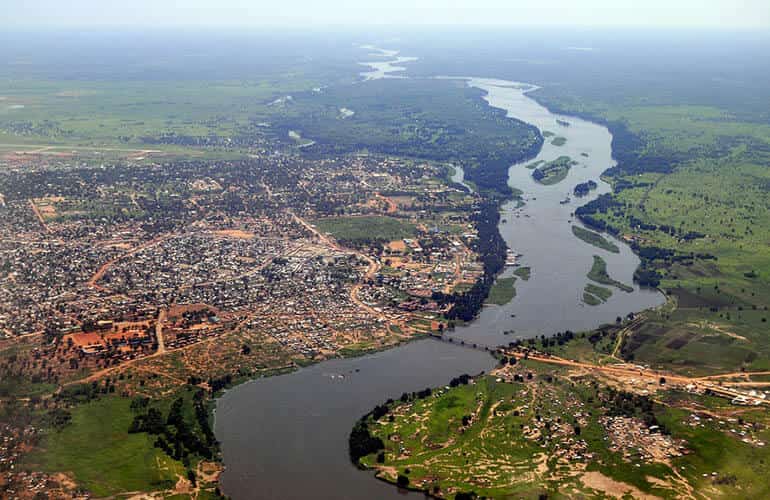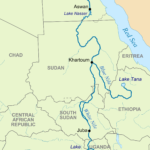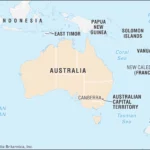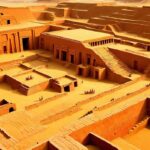Hey there, history buffs and curious minds! Let’s journey to Cairo, Egypt’s vibrant capital, where the echoes of ancient pharaohs meet the pulse of modern life. Perched gracefully on the banks of the legendary Nile River, Cairo’s story is forever entwined with this life-giving waterway. Join us as we delve into the rich tapestry of Cairo’s history and culture, shaped by the ebb and flow of the mighty Nile.
Capital Cities Along Which the Nile Runs
The Nile River, a name synonymous with ancient pyramids, powerful pharaohs, and the cradle of civilization. This iconic river, the lifeblood of Africa, courses through the heart of several significant cities, shaping their destinies and leaving an indelible mark on their identities. Among these urban centers are capital cities, the epicenters of their respective nations, drawn to the Nile’s fertile banks like moths to a flame. Let’s embark on a journey down the Nile, tracing its path through these captivating capitals.
Cairo: Born from the Nile, Living with the Nile
Our first stop takes us to Cairo, Egypt, a bustling metropolis practically inseparable from the Nile. It was the Nile’s fertile embrace that enabled ancient Egyptians to establish themselves in this region. The river’s life-giving waters nourished their crops, allowing them to flourish and build their iconic pyramids and develop a civilization that continues to captivate the world.
Even today, the Nile remains the lifeblood of Cairo. It irrigates vast farmlands, provides a vital transportation artery, and quenches the thirst of millions. Cairo, with its vibrant culture, rich history, and bustling economy, owes its very existence to the Nile.
Khartoum: Where Two Become One
Imagine the confluence of two mighty rivers, the White Nile and the Blue Nile, merging into a single, powerful force. This is Khartoum, the capital of Sudan, strategically located at the meeting point of these two great waterways. This confluence has shaped Khartoum’s destiny, transforming it into a melting pot of cultures and a vibrant hub of trade.
The city’s bustling markets, diverse communities, and unique blend of traditions are all testaments to the Nile’s influence. It is a place where the rhythms of life are set by the ebb and flow of the river, a testament to the power of nature to shape human destinies.
Kampala: Finding Peace at the Source
Our final destination takes us to the very source of the Nile, Lake Victoria, where we find Kampala, the capital of Uganda. This tranquil city, nestled on the shores of Africa’s largest lake, embodies a sense of peace and serenity that is deeply connected to the Nile’s gentle flow.
Kampala’s residents have learned to live in harmony with nature, embracing the Nile’s life-giving waters while actively engaging in conservation efforts to protect this precious resource for generations to come. It is a city that understands the delicate balance between progress and preservation, a testament to the power of human ingenuity to coexist with nature.
The Nile: Gift and Challenge
Living on the banks of the Nile River is akin to winning the geographic lottery. The river is an economic engine, fueling agriculture, transportation, and fishing industries, providing sustenance and livelihoods for millions. The Nile’s cultural impact is equally profound, influencing art, music, cuisine, and the very fabric of society.
However, this gift comes with inherent challenges. Pollution, water scarcity, and the ever-present threat of flooding are constant concerns for cities along the Nile. Balancing economic development with environmental stewardship is an ongoing challenge, demanding careful planning and sustainable practices.
What is the Capital City Along the Nile?
When we speak of a capital city intrinsically linked to the Nile, one name immediately springs to mind: Cairo. This bustling metropolis, with a history spanning over a thousand years, owes its very existence to the Nile’s generosity. The river’s fertile banks provided the foundation for agriculture, its waters offered a means of transportation, and its life-giving flow sustained a growing population. Cairo’s iconic pyramids, ancient monuments, and bustling markets are all testaments to the Nile’s enduring influence.
Journeying south, we encounter Khartoum, Sudan’s capital, strategically positioned at the confluence of the White Nile and the Blue Nile. This unique location has, for centuries, made Khartoum a cultural melting pot and a thriving center of trade. The Blue Nile, in particular, with its fertile silt, has played a crucial role in Khartoum’s agricultural success, further strengthening its bond with the river.
Continuing our southward journey, we arrive in Kampala, Uganda’s capital, nestled serenely on the shores of Lake Victoria, the source of the Nile. Kampala, with its stunning scenery and tranquil atmosphere, enjoys a unique connection to the river’s origin. It is a city that embodies the peace and tranquility often associated with the Nile’s gentle flow.
These three capital cities, bound by the Nile’s life-giving waters, illustrate the river’s profound impact on urban development, economic growth, and cultural exchange. From the bustling markets of Cairo to the ancient monuments near Aswan, the Nile’s legacy is etched into the very fabric of these cities.
Consider this:
- The Nile, a lifeline flowing through 11 African countries, including Egypt, Sudan, and Uganda, has nurtured countless communities and shaped their destinies.
- Cairo, Khartoum, and Kampala, each a capital city in its own right, owe their existence and prosperity to their strategic location along the Nile.
- The Nile’s influence on these cities extends beyond the physical, shaping their histories, economies, and cultural identities.
- The river provides essential resources, from transportation and irrigation to drinking water, enabling these cities to thrive and grow.
- Perhaps most importantly, the Nile has fostered a rich tapestry of cultures along its banks, connecting people and promoting diversity.
To further explore the Nile’s fascinating story, take a look at the “Nile River” entry in the Encyclopedia Britannica online!
What Capital Cities Does the Nile River Flow Through?
The Nile River, a colossal waterway, traverses the African continent, flowing through three capital cities, each bearing witness to its power and influence:
- Cairo, Egypt: This bustling metropolis, home to over 20 million people, wouldn’t exist without the Nile. Since the era of the pharaohs, the river has nourished Cairo, providing water for its inhabitants and serving as a vital trade route.
- Khartoum, Sudan: Positioned where the Blue and White Niles converge, Khartoum stands as a testament to the river’s unifying power. This strategic location has made it a cultural melting pot and a bustling center of commerce.
- Kampala, Uganda: Situated near the shores of Lake Victoria, the Nile’s origin, Kampala enjoys a serene ambiance. The city’s lush green spaces and lively markets reflect the Nile’s influence, demonstrating its power to shape both the physical landscape and the rhythm of life.
The Nile isn’t merely a river; it’s a thread woven into the history, culture, and lives of countless people. Its journey through these capital cities underscores its significance as a catalyst for growth, a source of life, and a unifying force.
Where Does the Nile Run?
Picture the Nile River as a journey, a story unfolding as it winds its way across the African continent. Its tale begins high in the Ethiopian Highlands, where Lake Victoria, Africa’s largest lake, serves as its reservoir. From this point, the Nile embarks on a remarkable journey north, gaining momentum with every passing mile.
Along its course, the Nile is joined by two major tributaries, the Blue Nile and the White Nile, each adding its unique character and strength to the main flow. These tributaries, like vital arteries, contribute to the Nile’s lifeblood, sustaining ecosystems and communities along their paths.
The Nile’s reach extends to several countries, most notably Egypt, Sudan, and South Sudan. These nations rely heavily on the Nile for their survival and prosperity. In Cairo, Egypt’s bustling capital, the river flows through the city’s heart, a constant reminder of its vital role in shaping Egyptian civilization.
Continuing its northward journey, the Nile carves through Sudan’s dramatic landscapes. In Khartoum, the capital, the White and Blue Niles reunite in a spectacular confluence, their waters merging into a unified force.
Further south, in South Sudan, the Nile remains a lifeline, providing irrigation for vast farmlands and sustenance for its people. The river also serves as a vital link between communities, facilitating trade and fostering connections that transcend geographical boundaries.
The Nile’s impact extends beyond the physical realm. Its waters have inspired generations of artists, writers, and musicians, its presence woven into the cultural fabric of the region. The annual flooding of the Nile, a natural phenomenon, has played a crucial role in the development of agriculture, depositing nutrient-rich silt along its banks. This fertile soil has sustained communities for millennia, making the Nile Valley a cradle of civilization.
The Nile River is more than just a body of water; it is a testament to the awe-inspiring power of nature and its profound influence on human civilization. Its journey across Africa is a tale of resilience, adaptation, and the interconnectedness of life itself.
It’s important to acknowledge that our understanding of the Nile, like many natural phenomena, is constantly evolving. Ongoing research and new discoveries continue to refine our knowledge about its origins, behavior, and the full extent of its influence.
Are There Cities Along the Nile River?
The Nile River, a lifeline snaking through the African continent, is adorned with an array of cities and towns, each bearing witness to its life-giving embrace. These urban centers, large and small, have flourished on the Nile’s banks for centuries, their histories interwoven with the river’s ebb and flow.
Cairo, Egypt’s bustling capital, stands as a testament to the Nile’s urban influence. However, it is merely one star in a constellation of cities that dot the river’s course. Khartoum, Sudan, positioned at the confluence of the Blue and White Niles, boasts a unique blend of ancient and modern influences, its cultural tapestry enriched by the river’s diverse tributaries.
Kampala, Uganda’s capital, though not directly situated on the Nile, is nestled on the shores of Lake Victoria, the river’s source. This strategic location has made Kampala a vital hub for trade, transportation, and cultural exchange.
The Nile’s impact on these cities extends beyond mere sustenance. It has shaped their economies, influenced their cultures, and inspired their arts. The river’s presence is ubiquitous, from the bustling markets to the tranquil parks, a constant reminder of its life-giving force.
Consider the Nile River as a giant map stretching across Africa, with these cities as key points along its course, each with its own unique story to tell. The Nile, as the central character, shapes the landscape and influences the growth and evolution of these urban centers.
Ongoing research and new discoveries continue to unravel the mysteries of the Nile and its impact on the surrounding regions. It is a reminder that the river’s story, like the cities it nurtures, is still being written.
Which Country is Known as the City of the Nile?
The Nile River, often associated with ancient Egypt, flows through eleven countries, each bearing its mark. However, no single country claims the title of “city of the Nile.” The question often arises from a common misunderstanding, as it is not a country but a city intrinsically linked to the Nile: Cairo, Egypt.
While Egypt itself is not referred to as the “city of the Nile,” it is undeniably defined by the river. The Nile has, for centuries, served as Egypt’s lifeblood, nurturing its land and shaping its destiny. Cairo, strategically positioned on the riverbanks, has flourished as the heart of this Nile-nourished civilization. For generations, Cairo has thrived as a center of trade, culture, and politics, its ancient walls whispering tales of pharaohs, pyramids, and the ebb and flow of life along the mighty Nile.
The Nile is more than just a scenic backdrop; it is the lifeblood that sustains Cairo. It provides drinking water, irrigates surrounding fields, and facilitates transportation and trade. Cairo’s fishermen rely on its bounty, and its timeless beauty attracts tourists from around the world.
However, Cairo’s burgeoning population has placed increasing pressure on the Nile’s resources. Pollution poses a threat, floods loom large, and water scarcity is a growing concern. These challenges highlight the delicate balance that Cairo must strike between progress and preservation as it navigates the complexities of its relationship with the Nile.
Despite these challenges, the Nile remains an integral part of Cairo’s identity. It is a source of immense pride for its people and a powerful symbol of Egypt’s enduring spirit.
Consider these points:
- The Nile’s reach: As the longest river in Africa and the second-longest in the world, the Nile’s influence is vast and far-reaching.
- A cradle of civilization: The Nile’s contribution to the rise of ancient Egyptian civilization, spanning thousands of years, is immeasurable.
- Cairo’s lifeline: From providing drinking water to enabling irrigation and transportation, the Nile is essential to Cairo’s very existence.
- Challenges and opportunities: While the Nile presents Cairo with challenges like pollution and resource management, it also offers opportunities for sustainable development and tourism.
The intricate relationship between Cairo and the Nile is in constant flux. Researchers continue to study the river’s impact on the city, seeking innovative solutions to ensure its sustainability for generations to come.
What is the Blue Nile’s Capital City?
Rivers, unlike countries, don’t have capital cities. They flow freely, carving their paths through landscapes, their influence transcending political boundaries. The Blue Nile, originating in the Ethiopian Highlands, is no exception. It charts its course through Ethiopia and Sudan, eventually meeting the White Nile in Khartoum, where the two rivers merge to form the mighty Nile.
However, the Blue Nile plays a pivotal role in the lives of two capital cities:
- Bahir Dar, Ethiopia: This vibrant city sits on the shores of Lake Tana, the source of the Blue Nile. Bahir Dar is renowned for its breathtaking scenery, with the lake and the Blue Nile’s early flow creating a picturesque backdrop.
- Khartoum, Sudan: It is here that the Blue Nile and the White Nile reunite, their waters merging to form the Nile River we know today. Khartoum, Sudan’s capital, owes its existence and prosperity to the presence of these two great rivers, particularly the Blue Nile, with its fertile silt deposits.
While the Blue Nile may not have a capital city in the traditional sense, its influence is deeply intertwined with the destinies of these two urban centers. It serves as a reminder that rivers, the lifeblood of our planet, connect us in ways that transcend political borders and geographical boundaries.
What is the City Set on the Nile River?
When we envision a city intrinsically linked to the Nile River, one name immediately springs to mind: Cairo. Egypt’s energetic capital, perched majestically on the eastern bank of the Nile, has shared a profound connection with the river for millennia. Cairo’s story is inseparable from the Nile’s life-giving flow, its history intertwined with the river’s rhythms.
The Nile’s fertile banks have served as a lifeline for Cairo’s growth, providing nutrient-rich soil that has sustained its people for generations. The river itself has acted as a vital artery for travel and trade, connecting Cairo to distant lands and fostering cultural exchange.
Cairo’s historical tapestry is woven with threads of the Nile. The ancient Egyptians, recognizing the river’s importance, established settlements along its banks. As Cairo grew in size and influence, it transformed into a center for knowledge, culture, and religion.
Today, Cairo’s skyline is a striking blend of ancient and modern. The majestic pyramids of Giza, enduring symbols of Egypt’s past, stand in stark contrast to modern skyscrapers, reflecting the city’s vibrant energy.
Through it all, the Nile River remains the heart and soul of Cairo. It sustains the city with its life-giving waters, provides a means of transportation, and offers a source of recreation and respite. The riverfront is a gathering place for locals and tourists alike, drawn to its breathtaking views and vibrant atmosphere. It is the pulse of the city, a constant reminder of the Nile’s enduring presence.
Does the River Nile Need a Capital?
The Nile River, a force of nature flowing for millions of years, has witnessed the rise and fall of empires. It carved its path through the African continent long before cities graced its banks, creating a green corridor of life in an otherwise arid landscape.
Ancient Egyptians were drawn to the Nile’s promise of fertile land and the natural highway it provided. Cairo, in many ways, is a product of the Nile’s bounty. The river’s resources fueled the city’s growth and prosperity, shaping it into the vibrant metropolis it is today.
The Nile, in its essence, doesn’t need Cairo or any other city to thrive. It is a force of nature, a testament to the earth’s enduring power. Cairo, on the other hand, owes its very existence to the Nile.
However, the relationship between the Nile and Cairo is not one-sided. Cairo’s presence has undoubtedly left its mark on the river. Dams and canals now regulate the Nile’s flow, altering its natural course and impact. The city’s growing population places increasing demands on the river’s resources, highlighting the need for sustainable practices and responsible stewardship.
The relationship between the Nile and Cairo is complex and multifaceted. While the Nile doesn’t need Cairo in the strictest sense, the two are inextricably linked. Cairo’s story cannot be told without the Nile, and the river’s journey through Egypt is forever altered by the city’s presence.
What City is on the Nile Delta?
At the Nile River’s mouth, where it fans out into the Mediterranean Sea, lies the fertile Nile Delta, the breadbasket of Egypt. Nestled in the heart of this verdant region is Cairo, a city forever entwined with the river’s delta.
Cairo’s destiny has been shaped by its unique location. For centuries, the Nile Delta has provided the city with fertile land for agriculture, enabling it to flourish and support a growing population. Even today, as Cairo embraces modernity, the Nile’s presence is palpable in its rhythm of life.
The Nile is more than just a source of resources; it is integral to Cairo’s identity. The river has always served as a vital trade route, bringing people and cultures from far and wide to Cairo’s doorstep. This constant influx of ideas and influences is reflected in the city’s diverse culture, stunning architecture, and vibrant spirit.
A visit to Cairo is a journey through time, a testament to the enduring bond between a city and a river. The Nile’s delta, with its fertile soil and strategic location, has nurtured Cairo’s growth, shaped its identity, and ensured its place as a cultural and economic hub.
What City Is the Nile Valley In?
When we think of the Nile Valley, images of ancient wonders and bustling cities often come to mind. At the heart of this historical and cultural tapestry lies Cairo, the captivating capital of Egypt. Home to over 20 million people, Cairo is a vibrant mix of old and new, a melting pot of cultures and a testament to the enduring legacy of the Nile River.
The Nile River has played a pivotal role in shaping Cairo’s destiny. It was not merely a scenic backdrop but a lifeline, providing drinking water, irrigation for crops, a means of transportation, and a route for trade. The Nile connected Cairo to the rest of Egypt and the wider world, fostering cultural exchange and economic growth.
Cairo’s strategic location in the Nile Valley has made it a global crossroads, a place where ancient history meets modern innovation. The city’s iconic pyramids, ancient temples, and bustling markets are all testaments to the Nile’s enduring influence.
It is important to note that while Cairo is the most well-known city situated in the Nile Valley, it is by no means the only one. Numerous other cities and towns, each with its unique history and connection to the Nile, dot the river’s banks. The Nile Valley is a tapestry of life and culture, woven together by the ebb and flow of its life-giving river.
Internal Links:
Dive into the depths of history and discover the most famous rivers that have shaped civilizations throughout the ages.
Explore the vibrant tapestry of the most famous cities in the US, where towering skyscrapers meet vibrant street life.
Embark on a journey through the realms of innovation and discover the most modern cities in the world, where technology and urban design converge.
- China II Review: Delicious Food & Speedy Service - April 17, 2025
- Understand Virginia’s Flag: History & Debate - April 17, 2025
- Explore Long Island’s Map: Unique Regions & Insights - April 17, 2025
















